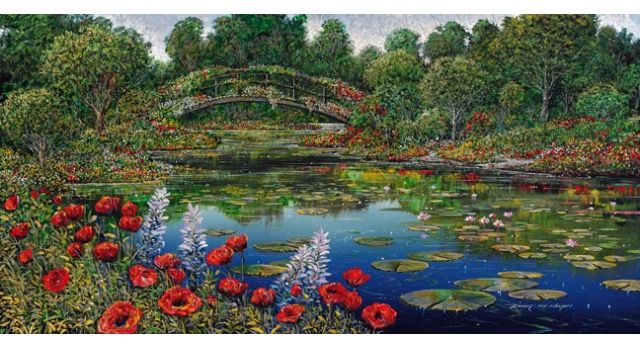In the widespread realm of artistic expression, few mediums own the undying allure and profound intensity of pingere, the Latin time period for portray. From the majestic strokes of a Renaissance masterpiece to the abstract kinds of current artwork, portray has served as a replicate reflecting humanity’s aspirations, emotions, and studies. In this exploration, we delve into the essence of pingere, unraveling its layers of that means and expression.
The Origin and Evolution of Pingere
Painting lines its origins returned to prehistoric times while early people embellished cave walls with vibrant depictions in their environment, rituals, and hunts. These primitive styles of expression advanced over millennia, culminating within the sophisticated techniques and types of classical civilizations consisting of ancient Greece and Rome.
The term “pingere” emerged from Latin, encompassing the act of applying pigments to a surface to create photographs, narratives, and sensations. With the arrival of the Renaissance in Europe, portray skilled a splendid resurgence, with luminaries like Leonardo da Vinci, Michelangelo, and Raphael elevating the craft to new heights of mastery and refinement.
Throughout records, painting has evolved in tandem with shifts in culture, technology, and beliefs. From the romantic landscapes of the 19th century to the avant-garde experiments of the 20th century, artists have always pushed the bounds of what constitutes a portray, hard conventional norms and perceptions.
The Language of Color and Form
At the coronary heart of pingere lies the language of colour and shape, where artists wield brushes like poets wield words, conveying complex feelings and narratives thru their compositions. Each hue carries its own symbolism and inspires a myriad of sensations, from the colourful warmth of pink to the serene coolness of blue.
In addition to color, form performs a pivotal position in portray, shaping the way viewers understand area, quantity, and motion inside a two-dimensional plane. Through the manipulation of line, shape, and texture, artists imbue their works with a feel of depth and dynamism, inviting audiences to discover the rich tapestry of visible stimuli before them.
Techniques and Styles: A Diverse Palette
The global of portray features a numerous array of strategies and patterns, each presenting its personal precise method to the craft. From the meticulous precision of realism to the unfastened-flowing spontaneity of summary expressionism, artists have at their disposal a enormous palette of opportunities for self-expression.
Realism, characterised via its devoted representation of the seen global, emerged as a dominant creative paradigm at some stage in the Renaissance, accomplishing its zenith with the advent of photography in the nineteenth century. In assessment, impressionism sought to capture the fleeting impressions of light and coloration, eschewing strict adherence to detail in prefer of atmospheric effects and subjective interpretations.
The twentieth century witnessed a proliferation of avant-garde moves which includes cubism, surrealism, and summary expressionism, each difficult traditional notions of illustration and perspective. Artists like Pablo Picasso, Salvador Dalí, and Jackson Pollock redefined the limits of portray, pushing the medium into ambitious new territories of experimentation and innovation.
Beyond the Canvas: Exploring Multidimensional Realms
While portray historically involves the utility of pigments onto a -dimensional surface, modern artists have expanded the boundaries of the medium, exploring multidimensional realms that blur the line between portray, sculpture, and installation artwork. Mixed media techniques, digital manipulation, and immersive installations have spread out new avenues for creative exploration, permitting painters to go beyond the restrictions of conventional materials and codecs.
Conceptual artists like Yayoi Kusama and Olafur Eliasson create immersive environments that envelop viewers in a sensory enjoy, blurring the limits between artwork and life. Their works undertaking conventional notions of space and belief, inviting audiences to reconsider their courting to the arena round them.
The Power of Interpretation: Viewer and Artist Perspectives
Central to the experience of pingere is the dynamic interaction among the artist and the viewer, each bringing their personal views, feelings, and interpretations to the creative manner. While the artist imbues their paintings with aim and which means, the viewer performs an equally crucial position in shaping the narrative and importance of the portray.
Art, in its purest form, is a speak between author and beholder, transcending the confines of time and space to forge connections that resonate throughout generations. Whether through contemplative introspection or lively debate, painting has the electricity to initiate notion, evoke emotion, and spark idea in individuals who encounter it.
Conclusion
In the tremendous tapestry of human enjoy, portray serves as a timeless beacon, illuminating the splendor, complexity, and depth of our shared lifestyles. From the historic caves of Lascaux to the cutting-edge galleries of New York City, the art of pingere continues to captivate and inspire, providing a window into the soul of humanity itself.
As we adventure via the nation-states of shade and form, let us embody the limitless opportunities of expression that painting gives. Whether as creators or appreciators, let us immerse ourselves in the rich tapestry of visible stimuli that surrounds us, ever aware of the profound connections that unite us as fellow vacationers in this wondrous adventure referred to as life.


